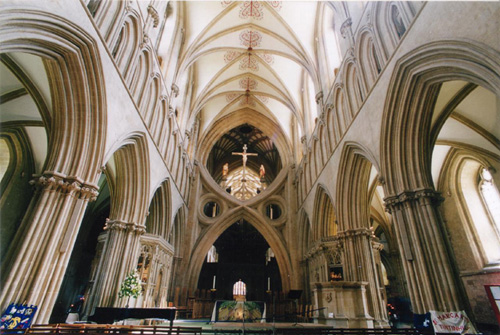If there is a style of architecture that I really like, it is Gothic. I would not build such a house today but I love it, it reminds me of all the stories and legends I read in my childhood. Wake up my imagination. The Gothic architecture is present throughout Europe but in the case of England Four periods are specifically distinguished, which have been called: Norman, Early English, Decorated, and Perpendicular. Of course, this classification system is not strict but it helps when studying English architecture. Another fact: the word Gothic was born in Ile de France and during the Middle Ages it was called "French style" for this reason.
One of the Gothic examples in England is the Wells Cathedral, an imposing temple that is in Wells, Somerset. It was built between 1175 and 1490 and is one of the most beautiful cathedrals in England. Most of the structure (the facade and the central tower), respects the «early English» style and is rich in decorations, moldings, carvings and sculptures. The eastern part has many original crystals, total rarity, and for all its beauties it is a National Heritage building. Archaeologists have found a trace of an ancient Roman mausoleum in the place, but the first church dates from the year 705 and was dedicated to Saint Andrew. Little and nothing remains of it in the cloisters area. As the construction of the current temple took several centuries, the passage of time is reflected in its different sectors and structures.
When Enrique VIII dissolved the monasteries the monetary income was reduced and the church underwent some internal modifications. Wells Cathedral has 10 bells, a beautiful library built in the XNUMXth century, a fantastic organ and a thousand other beauties that are hidden in all its corners. This cathedral was the inspiration for the book and later TV series The pillars of the earth and it was even a film set for Isabel, the Golden Age.

